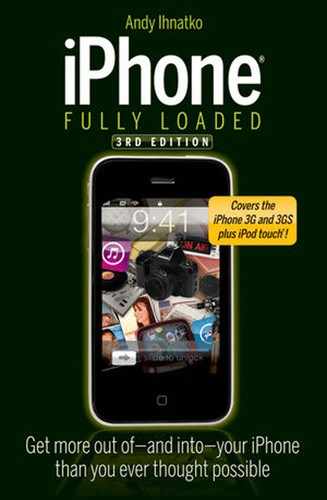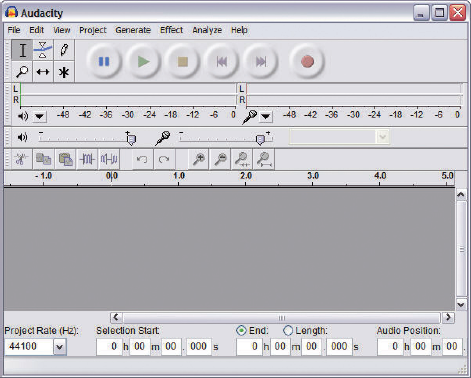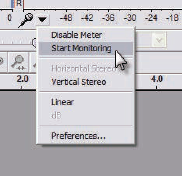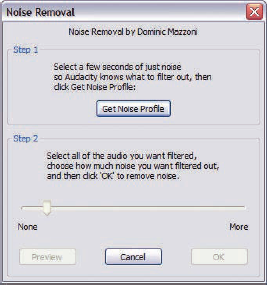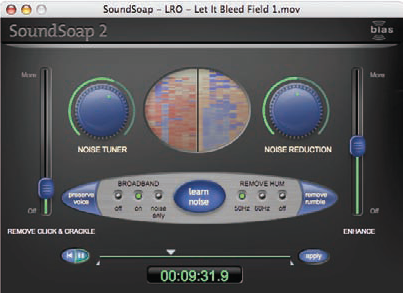Managing Expectations
Technique 1: Turn Your $2000 PC into a $50 Tape Recorder
Ah, the inherent superiority of vinyl! The added warmth ... the air around the notes ... the obvious parametric dimensionality at the top end of the spectrum!
What rubbish. What complete, cod-slapping rubbish. Good riddance to vinyl LPs. I suppose that if you have the sort of stereo system where each speaker costs roughly as much as a decent beach cottage and you're in a listening room built to the manufacturer's exact speci-fications, you can sense a superiority to analog recordings — if you're drunk enough. Only then could you fully appreciate the warmth, air, and dimensionality of every click and pop and skip of a 30-year-old LP.
LPs do have one advantage over CDs: The BBC has never issued an LP of Not the 9 O'Clock News on CD, nor has Amnesty International ever released The Secret Policeman's Ball ...
(searching ...)
Okay, it turns out that this album was released in 1992. But it's out of print and the cheapest copy I can find online is $99. I think you've caught up with me and my point anyway: There's a lot of material out there that never made it to CD, let alone the iTunes Store. If you ever want to enjoy one of these rare pressings again, you'll need to drag it clicking and screaming into the realm of digital by hand.
On a more pressing note, there's plenty of family history on audiotape. Your parents or grandparents sure didn't record their kids' school holiday concert on a digital device; they had a cassette recorder from Sears.
When you contemplate that stack of records, your goals should be Apollo 11 in scale. You'll get the astronauts there and you'll get them back alive. You'll emerge from the adventure with a cool box of moon rocks and some solid science and nobody can ever challenge your assertion that "Yes! I did that." What you won't wind up with is a profitable, self-sustaining 800-person permanent moon colony where Will Smith, the colony's military governor, off-planet for two months on R&R, returns to find a deadly conspiracy and two hours of action and adventure including a ten-minute lunar buggy chase in one-sixth Earth gravity.
Nope. Instead, you'll have audio files that sound nearly as good as the original. Even if these audio files are perfect — and as you can see, that might not even be possible — they'll dramatically underscore the limitations of LPs and cassettes as audio formats. You say the digital file has an annoying background hiss, and lacks a certain brightness and clarity? Well, congratulations: You've produced an MP3 that's exactly as good as the original tape. To bring it up to iTunes Store quality requires not only a good tape/record player and expensive, "prosumer" recording software, but a good ear and experience in producing audio ... or a $100 utility and a bit of patience. And even then, luck needs to be on your side.
Over the past few years I've tried nearly every combination of commercial hardware and software for converting old recordings to digital. And the experience has left me convinced that the only recordings that are truly worth all this effort are the ones that are never, ever going to be released on CD. Like tapes of family events, or conference and class lectures, and music that was lucky to ever win a commercial release to begin with.
Now that I've gotten you properly depressed about the feasibility of converting LPs and tapes to digital, onward to bright, optimistic solutions.
The easiest and cheapest solution? Go to Radio Shack, buy a stereo cable with a pair of RCA jacks on one end and a stereo headphone jack on the other, plug your audio component into the microphone jack of your PC or Mac, and then use desktop recording software to record each individual track or program the old fashioned way: Click the Record button on the software and then start the music playing from the other end.
This has the huge advantage of setting you back all of five bucks, tops. Even the software is free: Go to http://audacity. sourceforge.net and download Audacity. It's apowerful, open source, and free audio recording and editing app with editions for both PCs and Macs. Just be sure to download the MP3 plug-in. The main app can save files as AIFF audio, which iTunes can easily import and convert to AAC or MP3. But if you download the MP3 plug-in, Audacity saves the audio as an immediately iPhone-friendly format — and you'll save a step.
(Yes, the iPhone can play AIFF. But it's gi-normous uncompressed audio, remember.)
Tip
GarageBand is a nigh-professional audio recording app that comes with every Mac. You Windows folks might have something just as good on your PC, depending on where you bought it. And yet I'm recommending some Internet freebie?
Indeed I am. We're just doing some very nuts-and-bolts audio recording and editing here and almost any alternative is over kill. You'll get the project more quickly and with far less fuss using Audacity than any other tool. I've tried 'em all and I keep coming back to this swift, elegant little app.
Figure 5-1 shows you Audacity's basic editing window.
To record audio:
Plug the cable into your computer's microphone port, and select it as the source to record from. In Windows, go to the Sounds control panel and select the built-in line input in the Recording tab. On a Mac, open the Sound system preference, click the Input tab, and click on the built-in input.
Launch Audacity and choose Start Monitoring from the pop-up menu next to the microphone icon (see Figure 5-2). This will allow you to "watch" the sound coming in through the microphone port and adjust the recording levels appropriately.
Play some music. It doesn't matter what; you're not recording yet. You just want to set the input level correctly. Start off by adjusting the output volume of your tape deck or the stereo your turntable is plugged into. Listen via a set of headphones plugged into your computer as you nudge the output volume of the component up, up, up. The moment you start to hear distortion, back off some. That's the right output level.
Once you're satisfied with the levels, click the Record button in Audacity and restart the playback from the beginning.
It's best to record an entire side of the album or cassette at once, and then use Audacity's simple cut-and-paste editing tools to slice each track into its own audio file afterward. Just highlight the section of the waveform that represents Dexy's Midnight Runners' "Come on, Eileen," click Copy, create a new file, and then click Paste.
This way, you don't need to babysit a whole album that (frankly) would have been issued on CD if it were any good to begin with. Dexy's Midnight Runners? Really? Oh, dear. I'm not here to judge you but still ... oh, dear.
Hooking up an old audio component with a $5 cable is a fine solution. But here I'm assuming that you still even own a working turntable. Even if you have one in the closet, is the needle in any sort of decent shape, or is it the same one that came with the player when your dad bought it in 1977?
Oh, and remember: Turntables tend to require a special input. If you run a cable straight from the player itself, the levels will probably be way too low, which is why you'd need to run it through an amp.
If you have lots of LPs to convert, you might want to make a small investment in a USB turntable. As the name implies, these are record players that use USB as their audio outputs instead of old-fashioned analog plugs. You plug it into any USB port and your PC or Mac sees it as a digital audio input device.
The upside? You wind up with solid, line-level audio that your computer can work with intimately. The medium is digital, so the hookup to your computer won't introduce any more problems with the audio. And these turntables are relatively cheap. Again, if you have plenty of LPs to convert, it simpli-fies things when you begin with a brand-new turntable with abrand-new needle.
Many companies make USB turntables — even big-names like Sony. Irecommend turntables by Ion (www.ionaudio.com), which has a wide range of models; it's not just this one freak item in the product line.
Ion's TTUSB05 (shown in Figure 5-4) is sturdy, practical, and — at about $99 list — quite affordable; you won't feel like a dope for converting a dozen albums with it and then never using it ever again. For some extra scratch, you can avoid the computer middleman completely: The LP Dock model even has an iPhone-compatible dock, and via the iPhone's onboard stereo recording app, you can "play" albums directly into the device. The next time you sync your iPhone, the new recordings will be copied into your iTunes library as voice memos.
Once you have the USB player hooked up, it's just another audio input; you can use Audacity (or any other audio recording app) as normal.
I did set the standards low at the very top of the chapter, didn't I? Hiss, clicks, pops, buzzes ... they're impossible to avoid even with a brand-new LP fresh from wherever the hell people bought LPs from back when they were relevant.
If there's a pop or some other nastiness and it takes place during a silent passage, we can just select the offending blip and cover it with a little silence: Just choose Generate
It's more likely that you'll want to remove noise from actual music. Audacity has a tool for that as well in the form of a cleanup wizard. Choose Effect
Do not inquire as to the nature of the wizard's powers. In rough terms, you select a patch of the recording that represents "silence" and then the wizard uses that sampling to ask the question "if that section is meant to be silent, then I should 'clean' that sort of sound from the whole recording?" You'll need to fiddle with the slider and experiment a little, but it usually offers some clear improvements.
If you're serious about this, buy a plug-in from Bias called SoundSoap (see Figure 5-6). Bias makes professional audio processing apps, and SoundSoap is the "consumer" edition of a pretty intense, heavy-duty tool. SoundSoap doesn't do everything that its Pro big brother can do, but the $79 edition can still perform wonders. Again, not a tool for the casual user but if you have a thick stack of important LPs and tapes to convert, it might be worth the investment. Go to http://bias-inc.com to download a free trial edition.
Gosh, that sounds like it was a lot of work. It almost seems as though it would have been simpler to get your favorite 1982 hair-metal band to reunite in your living room and re-record their one hit, directly into your PC's microphones.
(Maybe you should try that. They could probably use the gig.)
And we haven't even gotten to the steps you need to perform after you import the finished track into iTunes! None of these tracks have the album, artist, and title information that you get automatically when you rip a CD or purchase a track from iTunes.
All told, it's probably best to forget that you ever cared about this band to begin with.
I mean, take a look at those losers on the album cover. I think the fewer people who know that you were ever into this group, the better.
